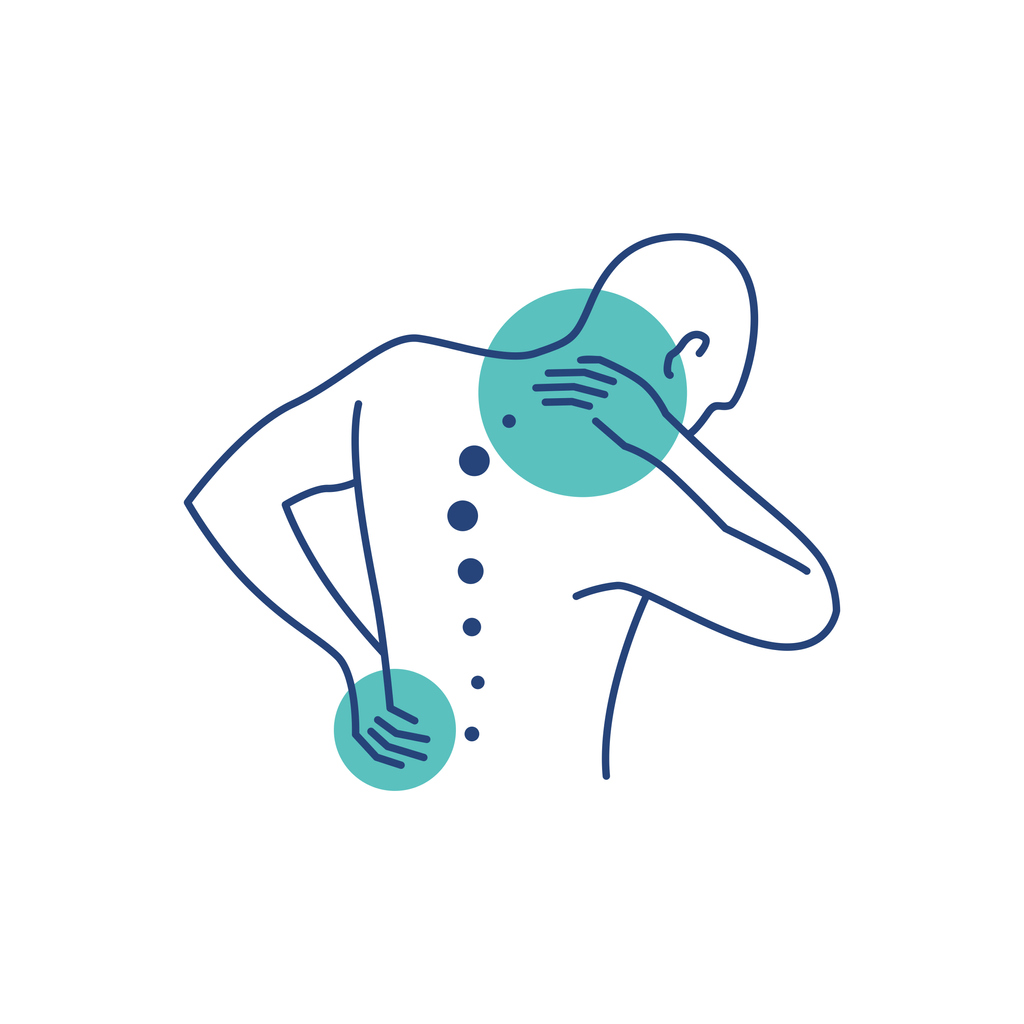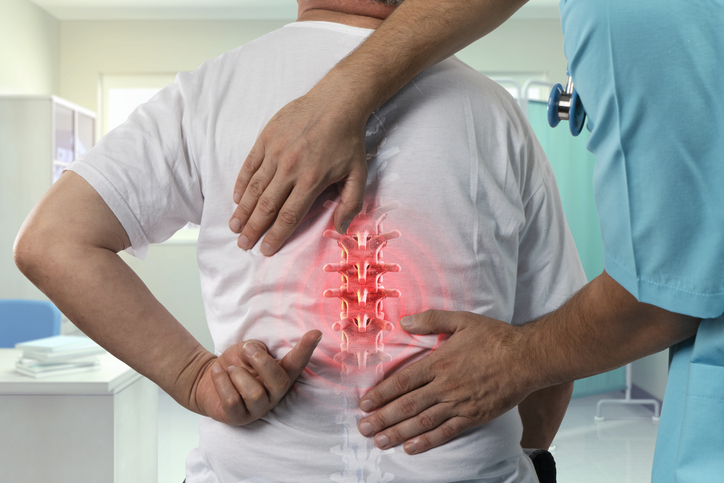Pain
Causes of Upper Back Pain

The upper back, or thoracic spine, consists of 12 vertebrae. It begins beneath the neck and ends at the bottom of the rib cage. The thoracic spine is relatively immobile, unlike the neck (cervical spine) and lower back (lumbar spine).
Upper back pain can develop gradually or occur suddenly. The pain often worsens if untreated. The causes of upper back pain vary; they include, but are not limited to, the following:
Muscle irritation — The muscles that move the shoulder are attached to the shoulder blade and the back of the rib cage. These muscles are prone to injury from repetitive motions or deconditioning. When they tense up, movement is often limited, shoulder pain is experienced, and tension headaches may occur.
Joint dysfunction — Sudden injuries or degenerative joint disease in the thoracic spine can cause dysfunction and pain. This includes tearing of the joint capsule or facet joint cartilage.
Poor posture — Poor posture can throw the body out of alignment, causing upper back pain. Keeping the back straight while standing evenly distributes the weight of the body on the feet. When sitting, the shoulders should be kept in line with the ears.
Injury — Strains, due to overuse, sports, or improper lifting, can cause muscle or ligament problems, resulting in upper back pain.
Pinched nerve — Upper back pain can result from a pinched nerve in the spine near the ribs.
Osteoarthritis — The spine is commonly affected when the cartilage protecting the bones wears down. Bone spurs can develop and press on spinal nerves, resulting in upper back pain.
Herniated disc — Spinal discs are rubbery cushions that sit between individual vertebrae. The “wear and tear” of aging or trauma to the back can cause the soft jelly-like center of the disc (nucleus) to herniate or tear through the tougher, rubbery exterior (annulus). This places pressure on the spinal nerves, resulting in upper back pain.
Myofascial pain syndrome — Myofascial pain syndrome is a chronic pain condition that affects the fascia (the tissue that connects and covers the muscles). Symptoms include muscle pain and specific “trigger” points that may refer pain to another area of the body.
Fractured vertebra — Spinal fractures most commonly occur due to accidents. A fractured vertebra can cause a bone fragment to pinch or damage the spinal cord or spinal nerves.
Gallstones — Gallstones often cause pain between the shoulder blades or in the right shoulder.
Excess weight — Being overweight places extra stress on the back, which can result in upper back pain.
Smoking — Smoking reduces blood flow, which results in decreased nutrients to the spinal discs. Smoking also slows the healing process.


















